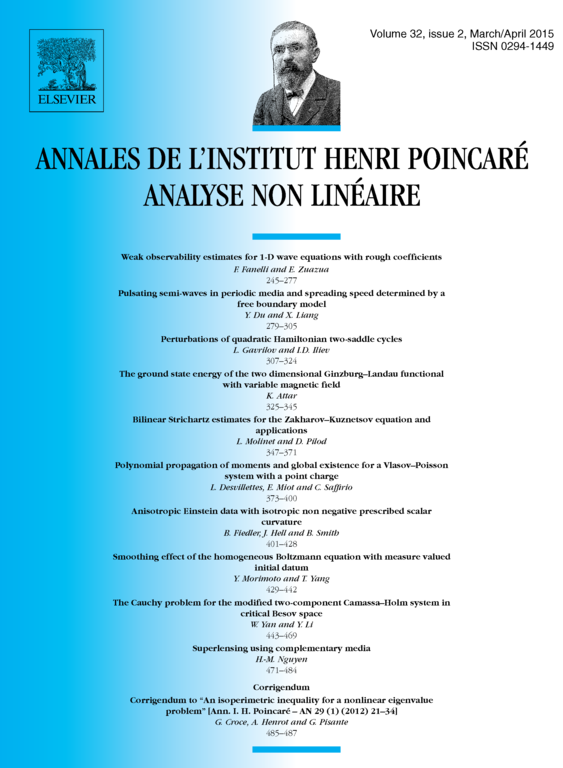Superlensing using complementary media
Hoai-Minh Nguyen
EPFL SB MATHAA CAMA, Station 8, CH-1015 Lausanne, Switzerland; School of Mathematics, University of Minnesota, MN 55455, United States

Abstract
This paper studies magnifying superlens using complementary media. Superlensing using complementary media was suggested by Veselago in [16] and innovated by Nicorovici et al. in [9] and Pendry in [10]. The study of this problem is difficult due to two facts. Firstly, this problem is unstable since the equations describing the phenomena have sign changing coefficients; hence the ellipticity is lost. Secondly, the phenomena associated might be localized resonant, i.e., the field explodes in some regions and remains bounded in some others. This makes the problem difficult to analyze. In this paper, we develop the technique of removing of localized singularity introduced in [6] and make use of the reflecting technique in [5] to overcome these two difficulties. More precisely, we suggest a class of lenses which has root from [9] and [14] and inspired from [6] and give a proof of superlensing for this class. To our knowledge, this is the first rigorous proof on the magnification of an arbitrary inhomogeneous object using complementary media.
Cite this article
Hoai-Minh Nguyen, Superlensing using complementary media. Ann. Inst. H. Poincaré Anal. Non Linéaire 32 (2015), no. 2, pp. 471–484
DOI 10.1016/J.ANIHPC.2014.01.004